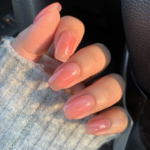In the world of orthodontics, permanent retainers are one of the most popular options for maintaining a straight and healthy smile. If you have recently undergone orthodontic treatment or are considering it, you may be wondering about the benefits of permanent retainers for top teeth.
Keep reading to take an in-depth look at everything you need to know about permanent retainers for top teeth
Understanding Permanent Retainers for Top Teeth
A permanent retainer is a wire that is bonded to the back of your teeth to help keep them in place after orthodontic treatment. This type of retainer is typically used on the upper and lower front teeth, which tend to be the most prone to shifting after braces.
Permanent retainers for top teeth are made from a thin, flexible wire that is attached to the back of your teeth with a dental adhesive. They are designed to be discreet and comfortable, so you can wear them without anyone knowing.

The Benefits of Permanent Retainers for Top Teeth
Long-Term Stability
One of the biggest advantages of permanent retainers is that they provide long-term stability for your teeth. Unlike other types of retainers, which must be worn consistently to maintain results, permanent retainers do not require removal or adjustment. They work by holding your teeth in place, so you can enjoy a straight and healthy smile for years to come.
Convenience
Another benefit of permanent retainers is their convenience. Because they are bonded to the back of your teeth, you don’t have to worry about removing them before eating or brushing. This makes them a great option for busy individuals who want to maintain their smiles without any extra hassle.
Discreet Appearance
Many people choose permanent retainers for top teeth because they are discreet. The wire is bonded to the back of your teeth, so it is virtually invisible from the front. This allows you to maintain a natural-looking smile while keeping your teeth straight and healthy.
Cost-Effective
In the long run, permanent retainers can be more cost-effective than other types of retainers. Because they provide long-term stability, you won’t have to worry about replacing them or paying for additional orthodontic treatment down the line.
The Drawbacks of Permanent Retainers for Top Teeth
Although there are many benefits to choosing permanent retainers for top teeth, there are also some drawbacks to consider, including:
Difficulty Flossing
One of the biggest challenges with permanent retainers is flossing. Because the wire is bonded to the back of your teeth, it can be difficult to get dental floss between each tooth. This can make it harder to maintain good oral hygiene and may increase your risk of developing cavities or gum disease.
Potential for Breakage
Another drawback of permanent retainers is that they can potentially break or come loose. If this happens, you will need to see your dentist or orthodontist to have the retainer repaired or replaced.
Adjustment Period
Finally, it’s important to note that there may be an adjustment period when you first get your permanent retainer. Your teeth may feel slightly sore or uncomfortable at first, but this should subside within a few days.
Caring for Your Permanent Retainer
To ensure your permanent retainer remains effective and comfortable, it’s important to take proper care of it. Here are a few tips:
Brush Regularly
Brush your teeth twice a day with fluoride toothpaste to keep your permanent retainer and teeth clean and free from plaque buildup.
Floss Daily
Although flossing can be challenging with a permanent retainer, it’s important to do so on a daily basis. Try using floss threaders or interdental brushes to make the process easier.
Avoid Sticky Foods
Try to avoid eating sticky or chewy foods that could potentially damage your permanent retainer.
Attend Regular Dental Checkups
Visit your dentist regularly for cleanings and checkups. They can ensure your permanent retainer is still in good condition and make any necessary repairs or adjustments.
Conclusion
Permanent retainers for top teeth can be an excellent option for maintaining a straight and healthy smile after orthodontic treatment. While they do come with some drawbacks, such as difficulty flossing and potential for breakage, the benefits – including long-term stability, convenience, and cost-effectiveness – make them a popular choice among many individuals.
If you are considering a permanent retainer for your top teeth, be sure to discuss your options with your dentist or orthodontist. With proper care and maintenance, your permanent retainer can help keep your smile looking beautiful for years to come.
FAQs
- Will people be able to see my permanent retainer? No, your permanent retainer is bonded to the back of your teeth and is virtually invisible from the front.
- Can I eat normally with a permanent retainer? Yes, you can eat normally with a permanent retainer. However, you should avoid sticky or chewy foods that could potentially damage the wire.
- How often should I brush and floss with a permanent retainer? You should brush your teeth twice a day and floss daily with a permanent retainer.
- Can I have a permanent retainer removed if I change my mind? Yes, you can have a permanent retainer removed if you change your mind. But, you should discuss this with your dentist or orthodontist to determine the best course of action for maintaining your dental health.
- Will my permanent retainer require any special care or maintenance? Your permanent retainer will require regular brushing and flossing, as well as regular dental checkups to ensure it remains in good condition. It is important to avoid habits like biting your nails or using your teeth as tools, which could potentially damage the wire.






